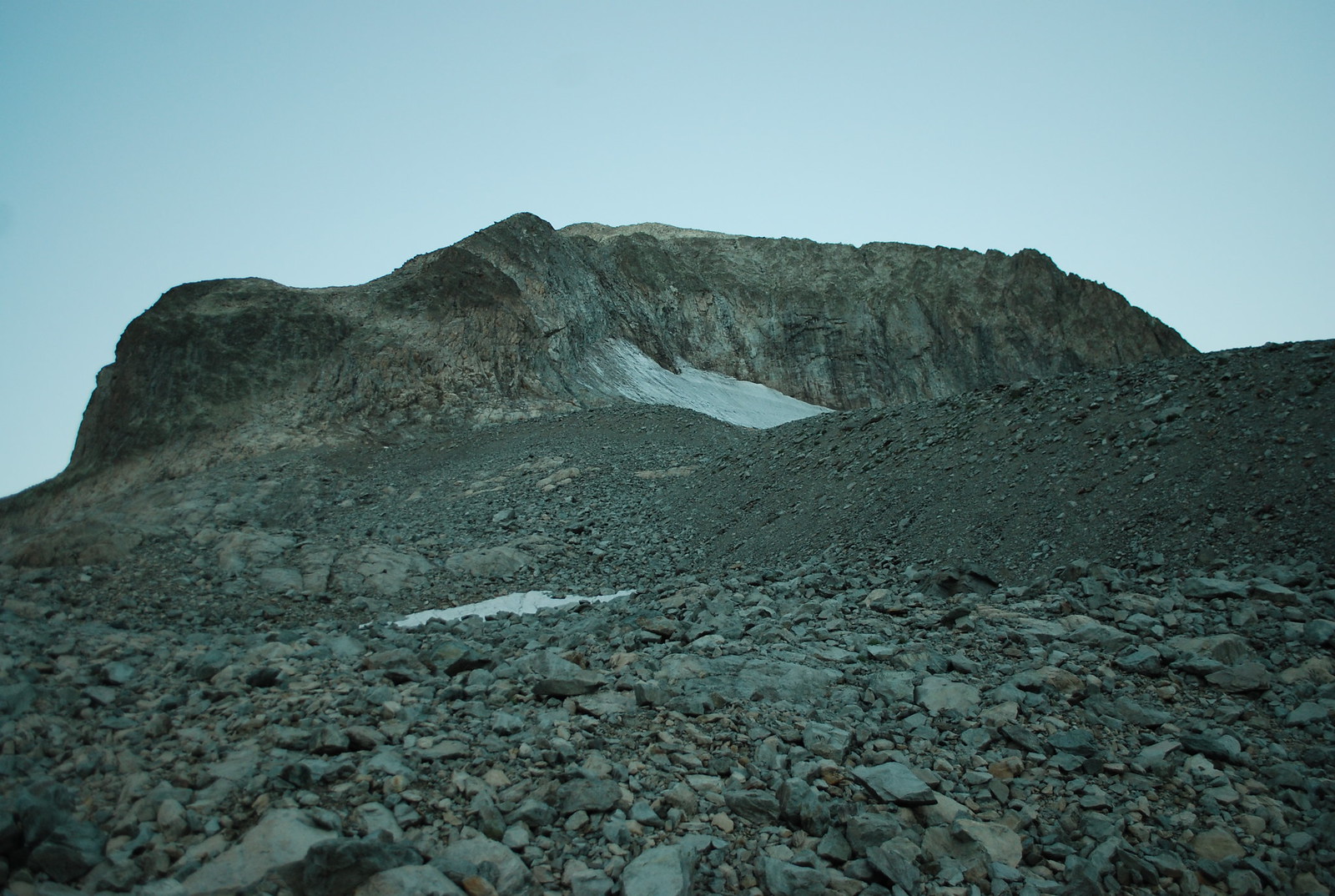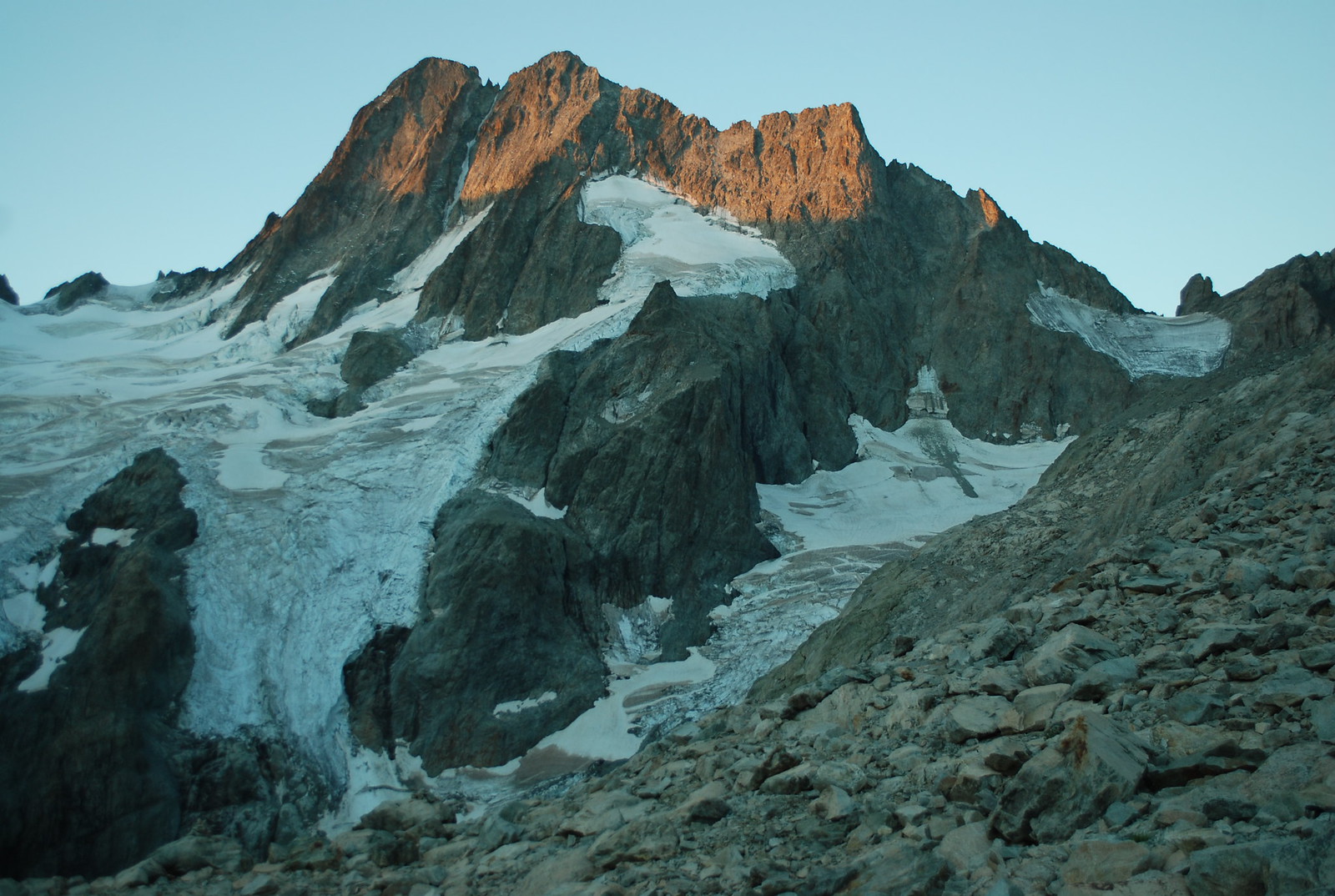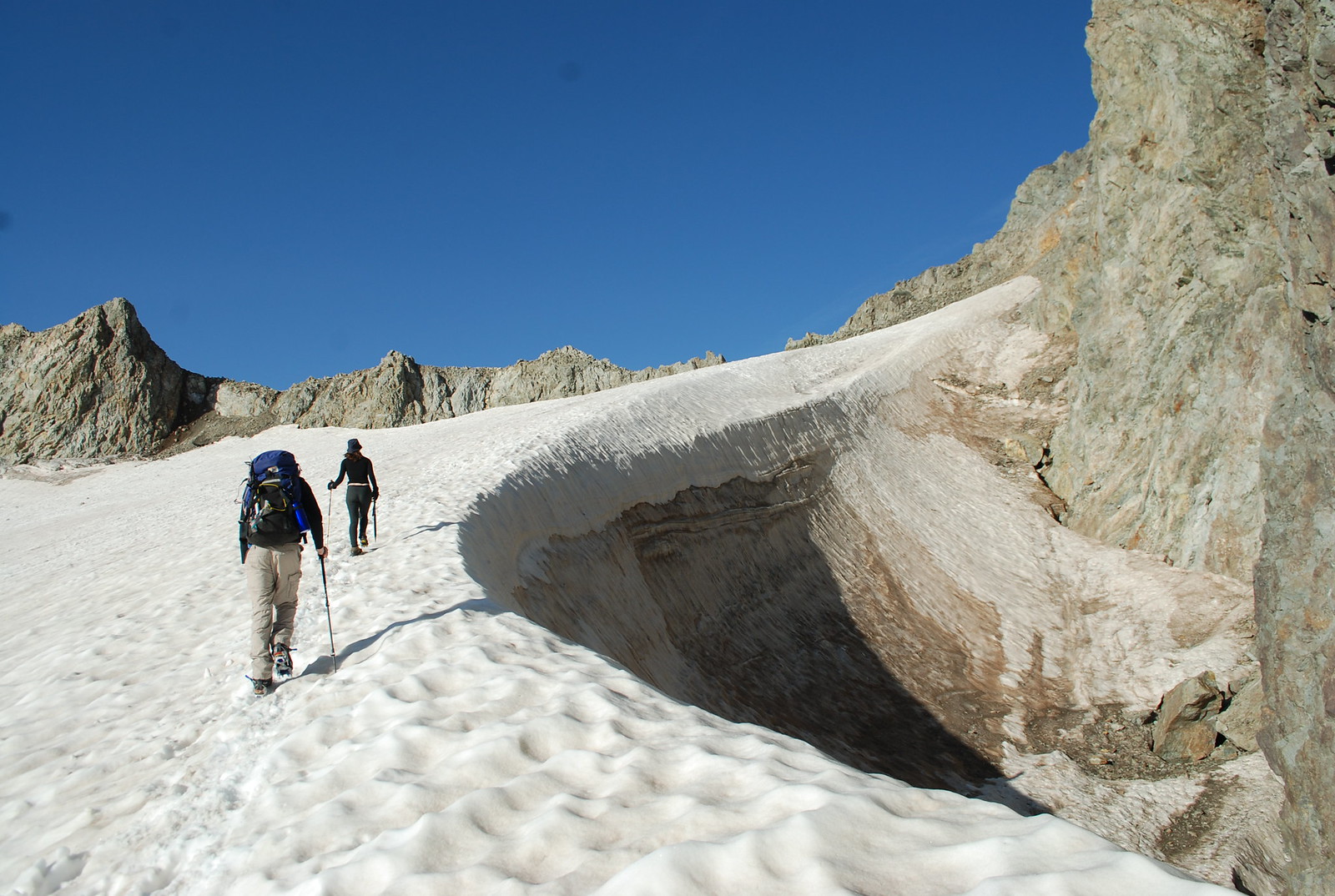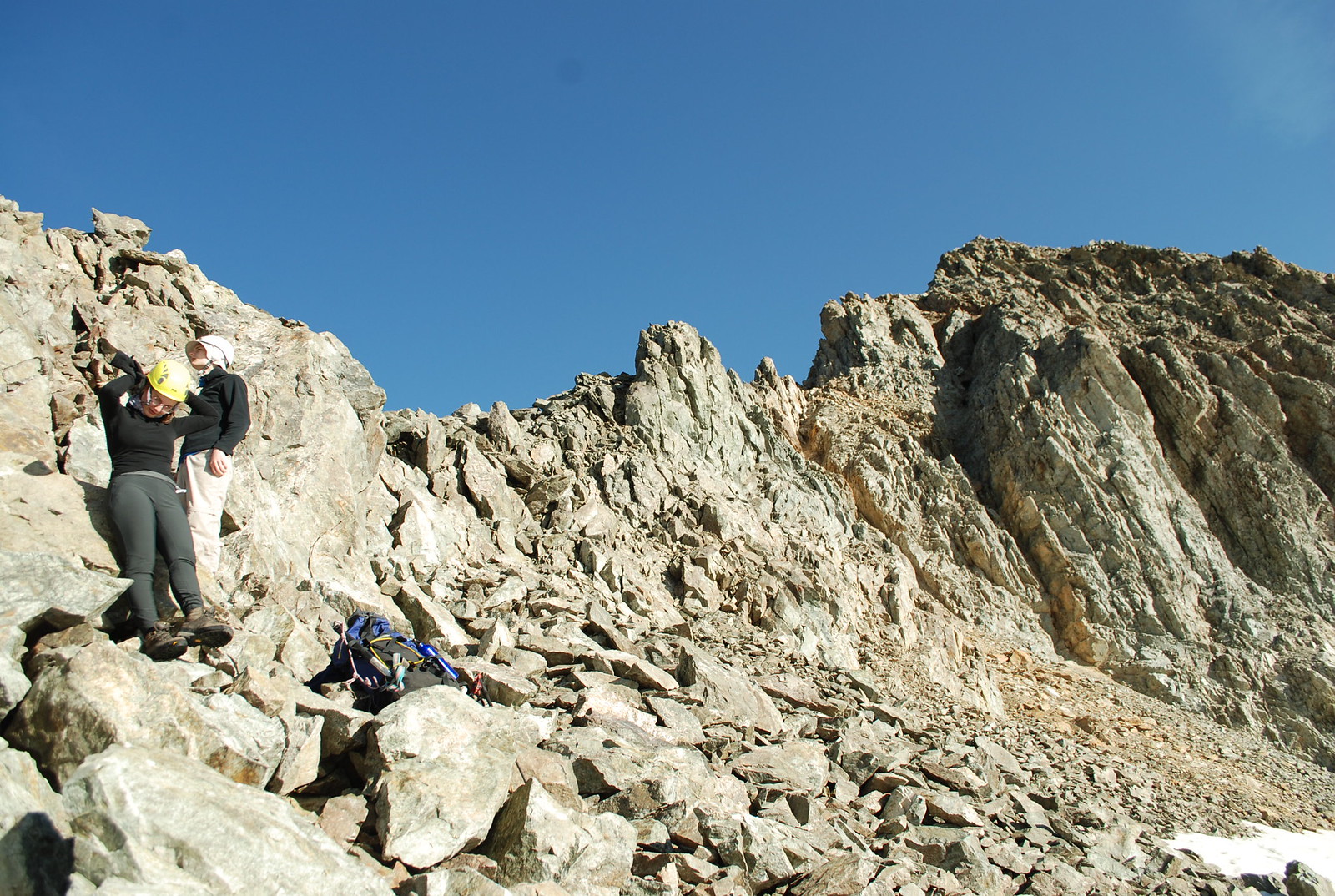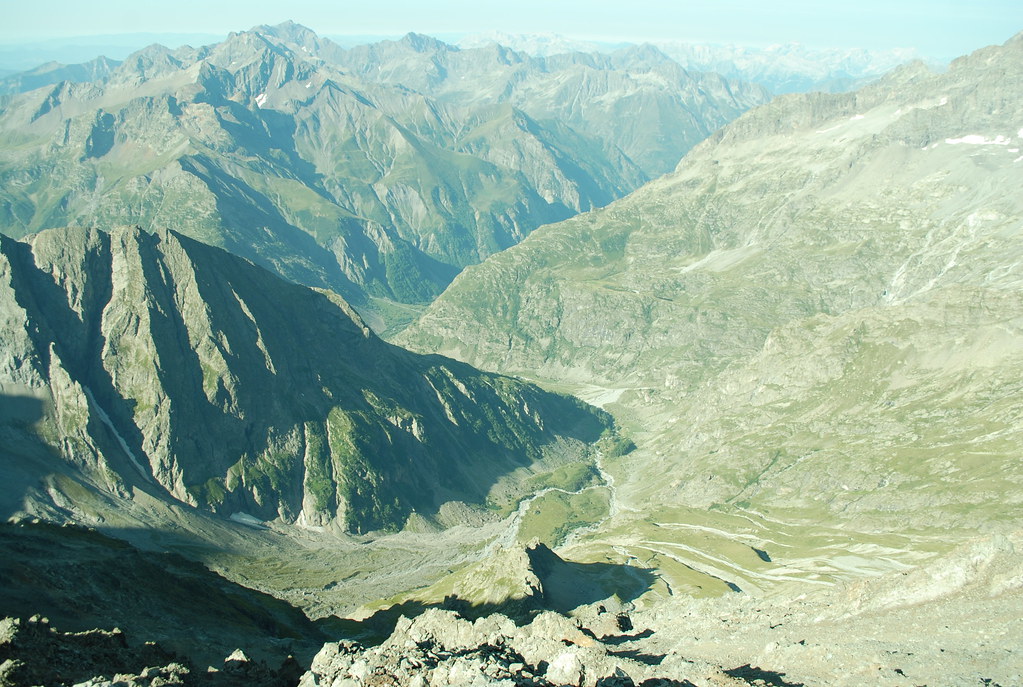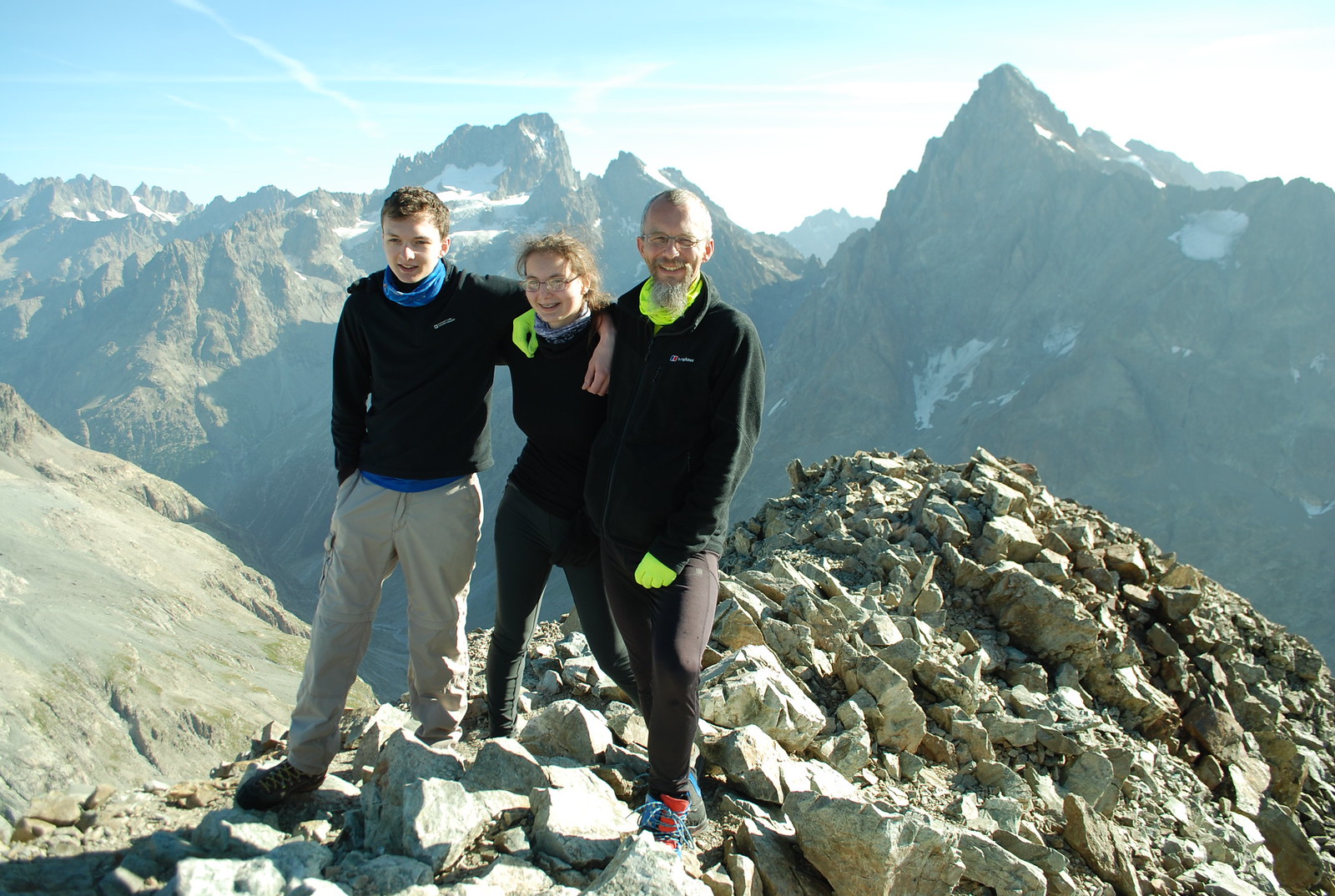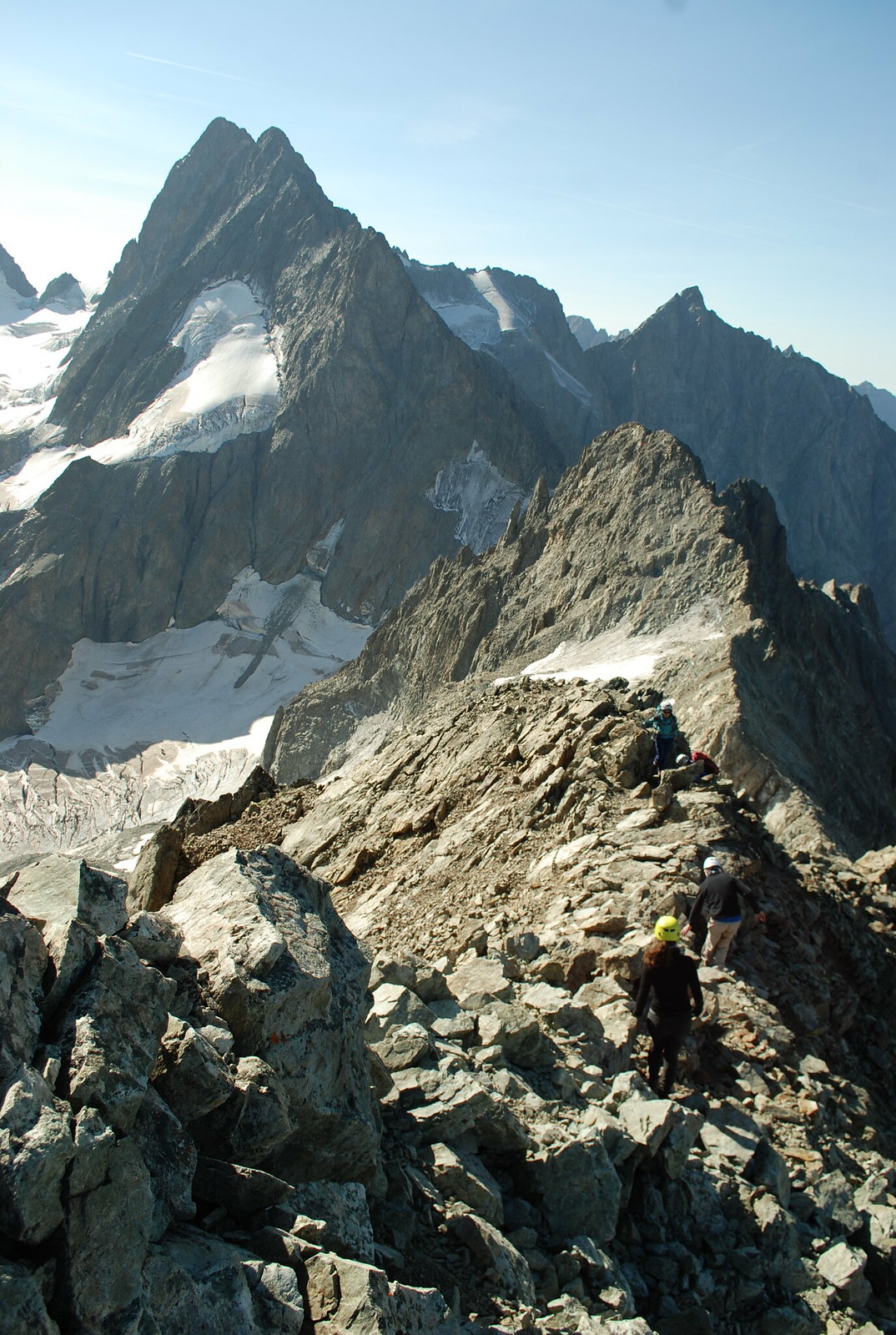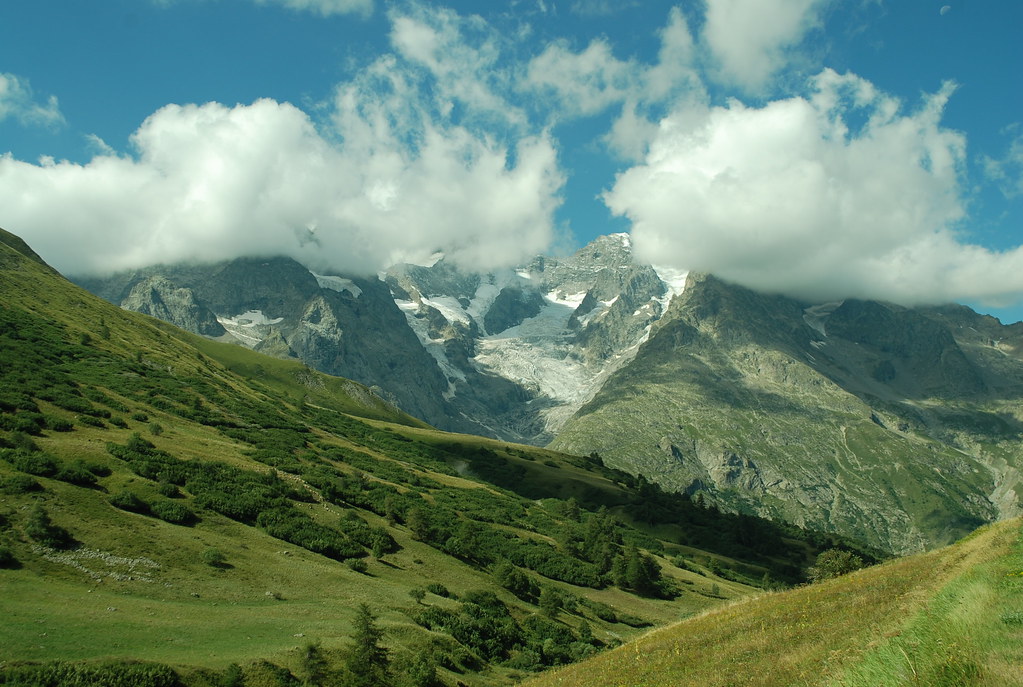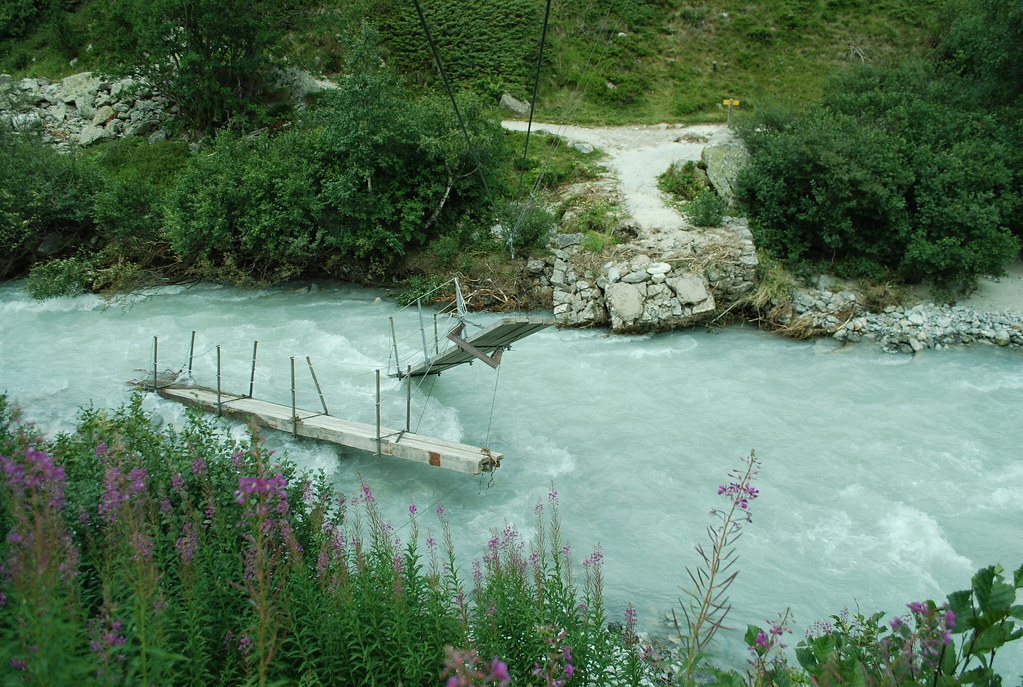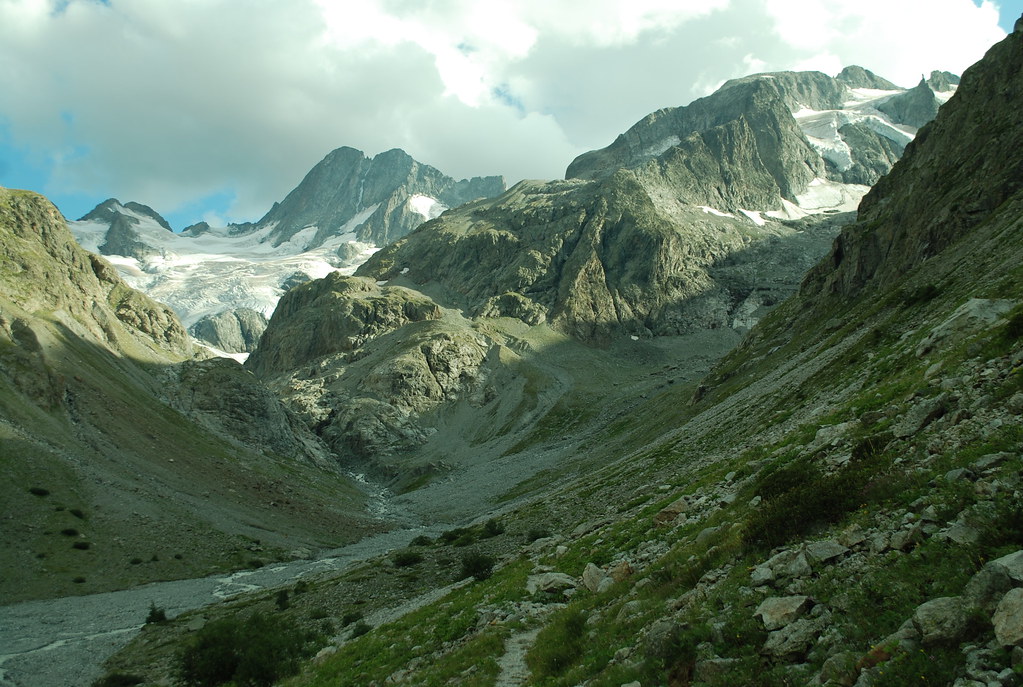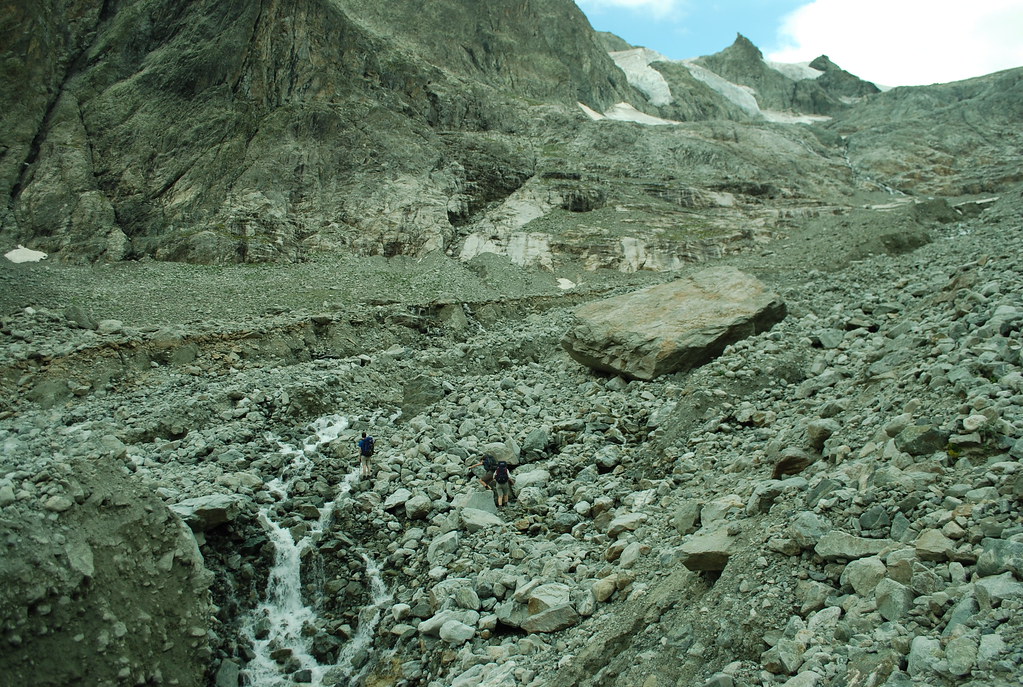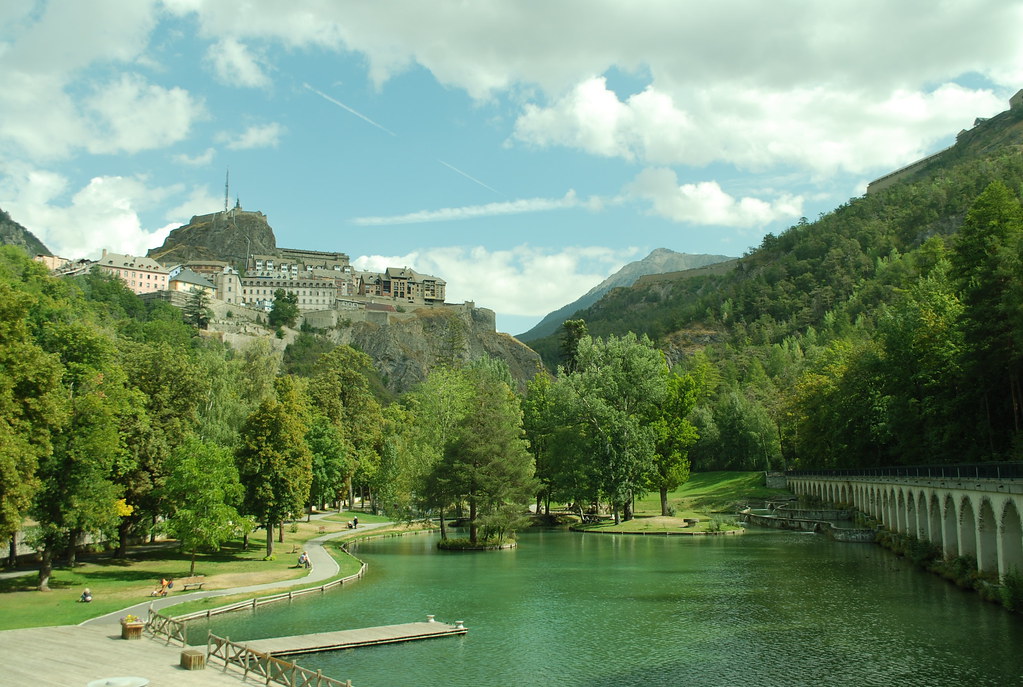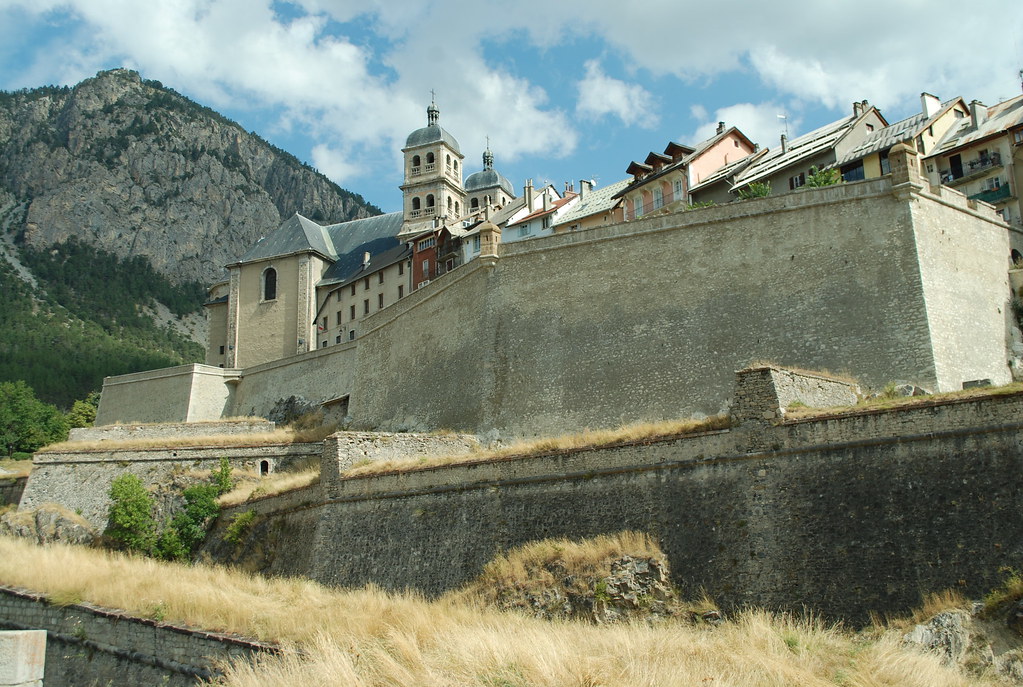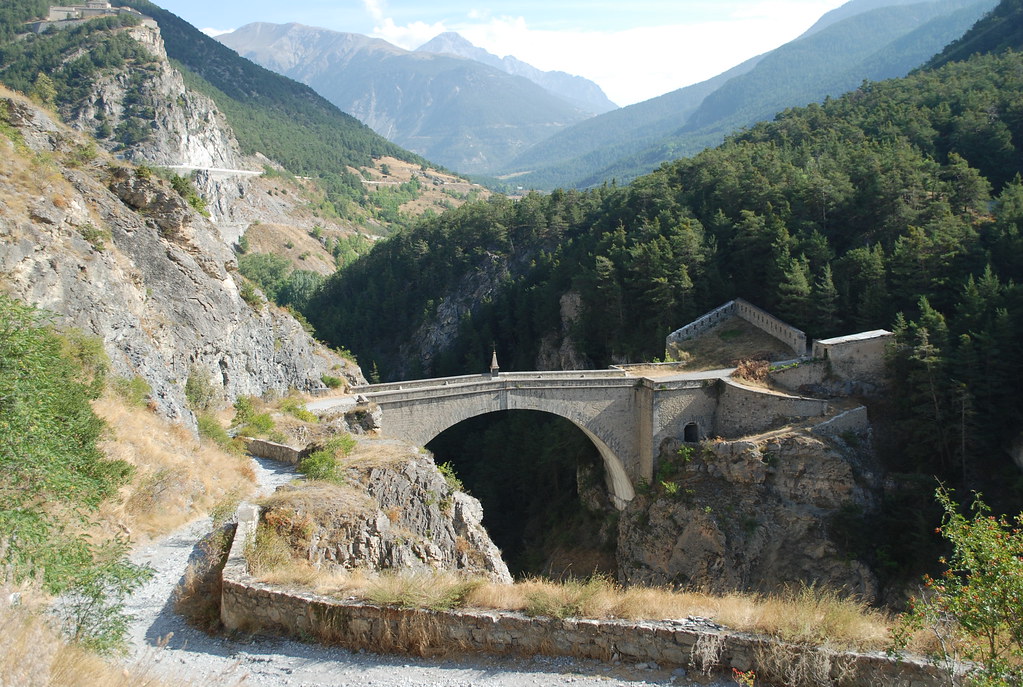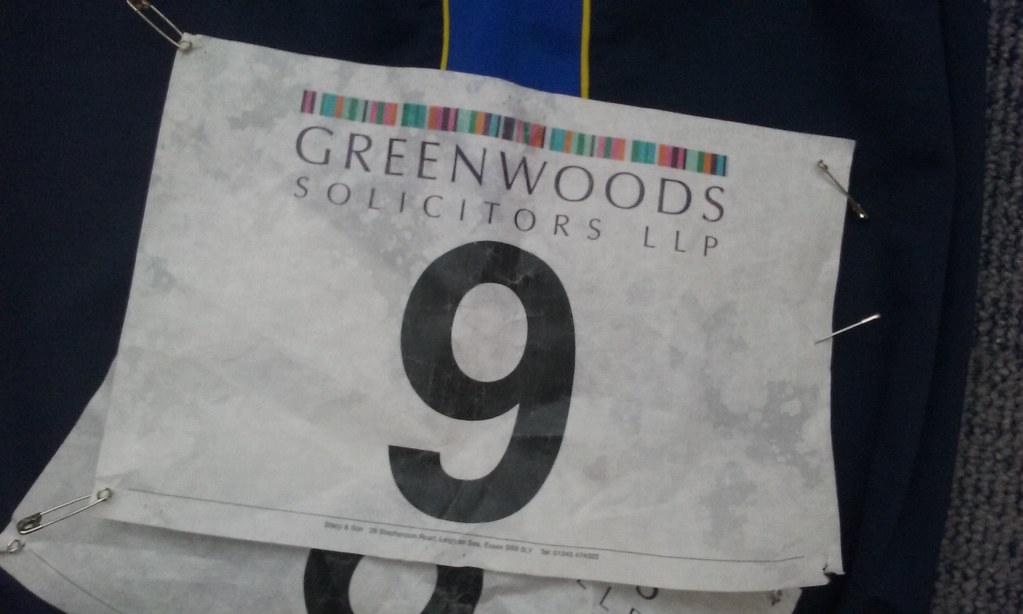The next day it is probably time to go down, especially since plans to go up to the Col du Sele appear inadvisable in the light of conditions. In fact a party have come from that direction but we are relatively inexperienced and conditions are clearly not good, and since we don't actually want to cross it's just not a good idea. However, going down won't take all day so D, E and I decide to go down to the glacier basin and see what's what from there. We rise at the sane hour of 7:30 for the standard breakfast and are off by 8.
Before we do that, here's Pilatte taken from above at the end of yesterday. The route in from the valley is to the left. Here's a
view from the terrace looking right up towards les Bans. Here's
the common room empty then, the "urinal" is the water tap.
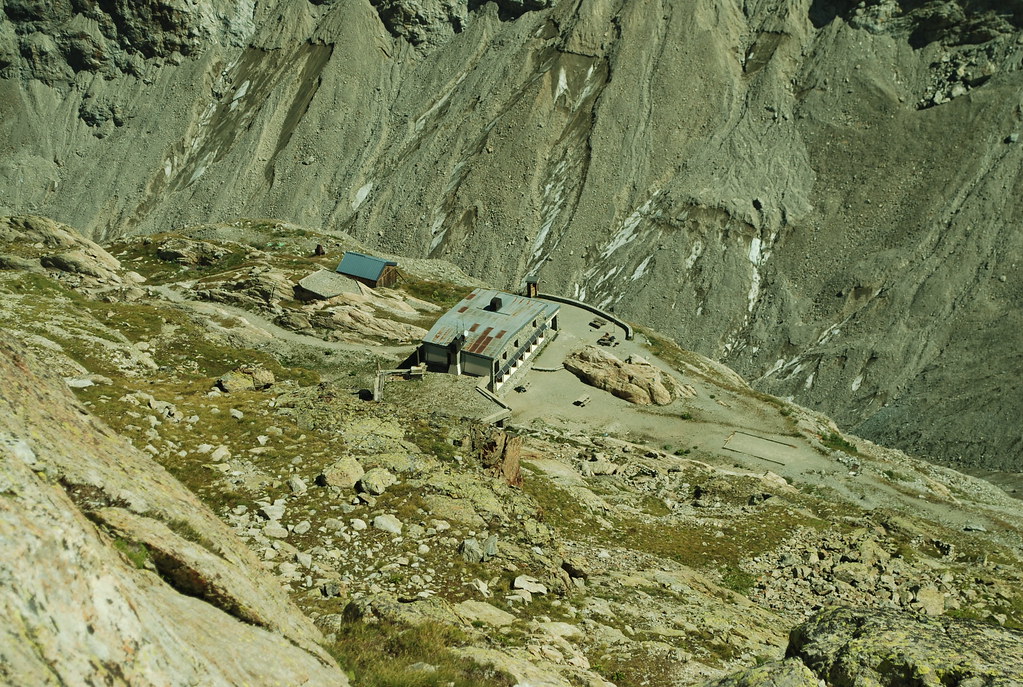
There's a wide dust-gravel area with tables with a panoramic view. You'll notice it all looks quite dry and the hut was on short commons for water: drinking water could be had from taps but the indoor loos were forbidden leaving only
the outdoors "long drop" that you see just "over" the hut. Off to the far right is the boules allee. Also taken the day before is the start of today's route:
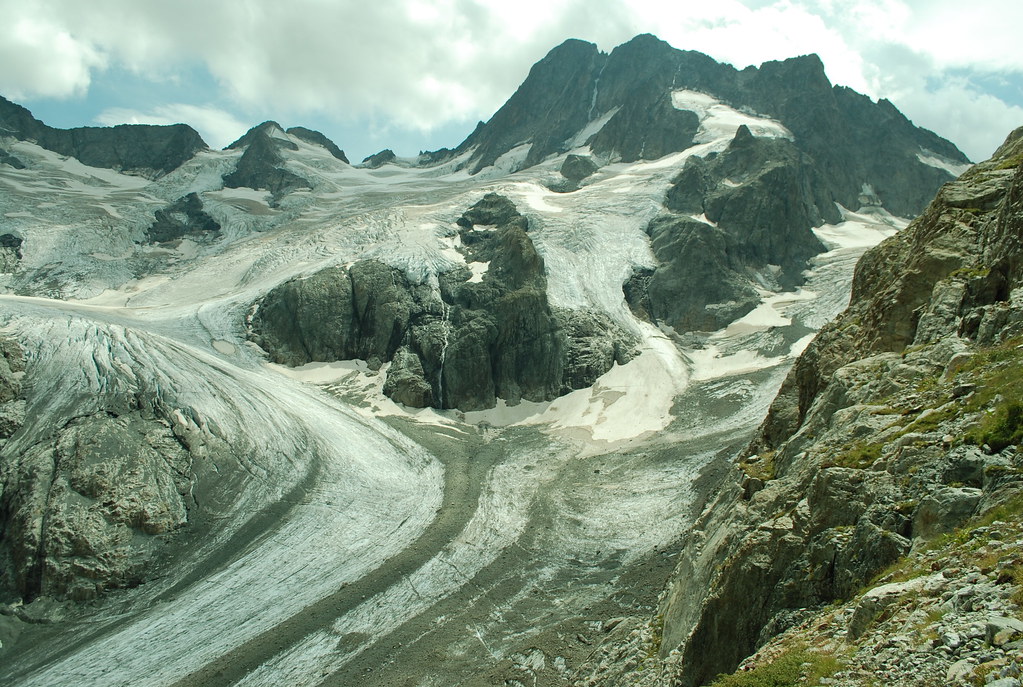
The path heads off to the right, rising gently up by 50 m before you start to descend. It is... worrying. There's no run-out so you want to be careful on your feet, though "difficult" sections have cable. Not to spoil the surprise but when we get down we cross the obvious central moraine and follow the obvious glacier swooshing up to the left, avoiding getting too close to the rock in the centre, because ice has clearly fallen off it not long ago.

Here we are at the bottom of the descent. I'm now on the glacier, or rather the pile of rubble / moraine that edges the glacier; E is coming down the rope that protects this last stage (but just hand-over-hand; that's all that is needed, and since the rope is knotted it is all that is possible). You see the red paint blobs that look large from here but are teensy weensy from the glacier; memorise where it is, it is hard to see. If you follow the link to the expanded pic you'll see the cables leading from where D is at the top of the rope to the ladders off to the right. If you were of a nervous disposition you might rope up for all this. While we're on the route, here's a nice pic (taken from after we've trogged up a bit) because it makes it look all scary.
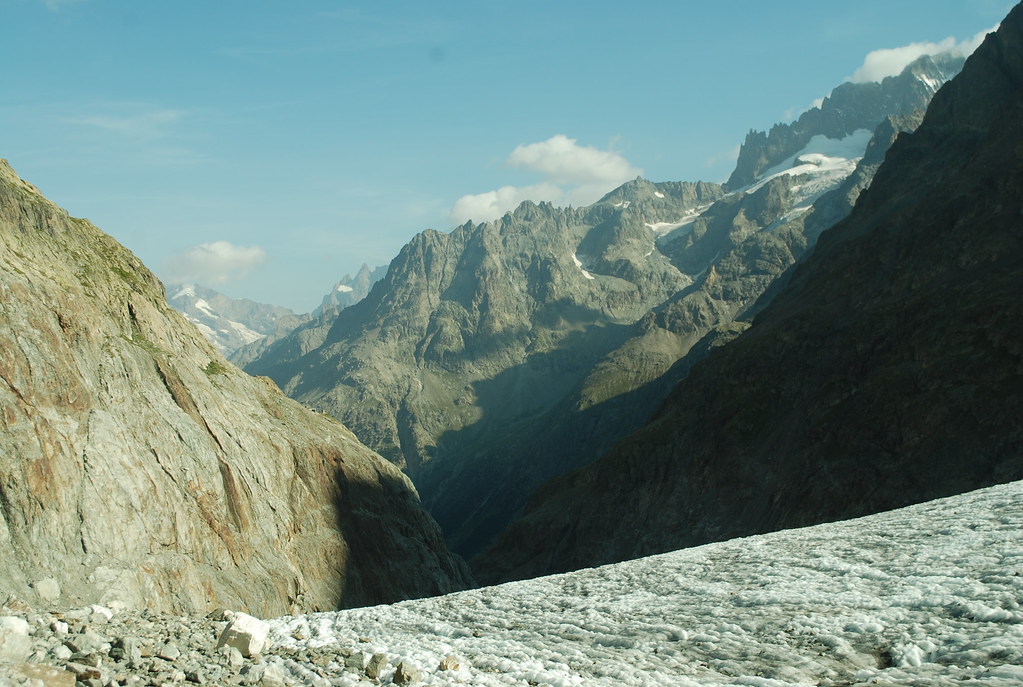
Look closely (you'll need the full-size pic) and you'll see Pilatte on the shoulder, and on the left side a crack slanting down with a blob of red on either side of it; that's our route. Meanwhile, on the glacier looking upwards we see up the swooshy ramp.
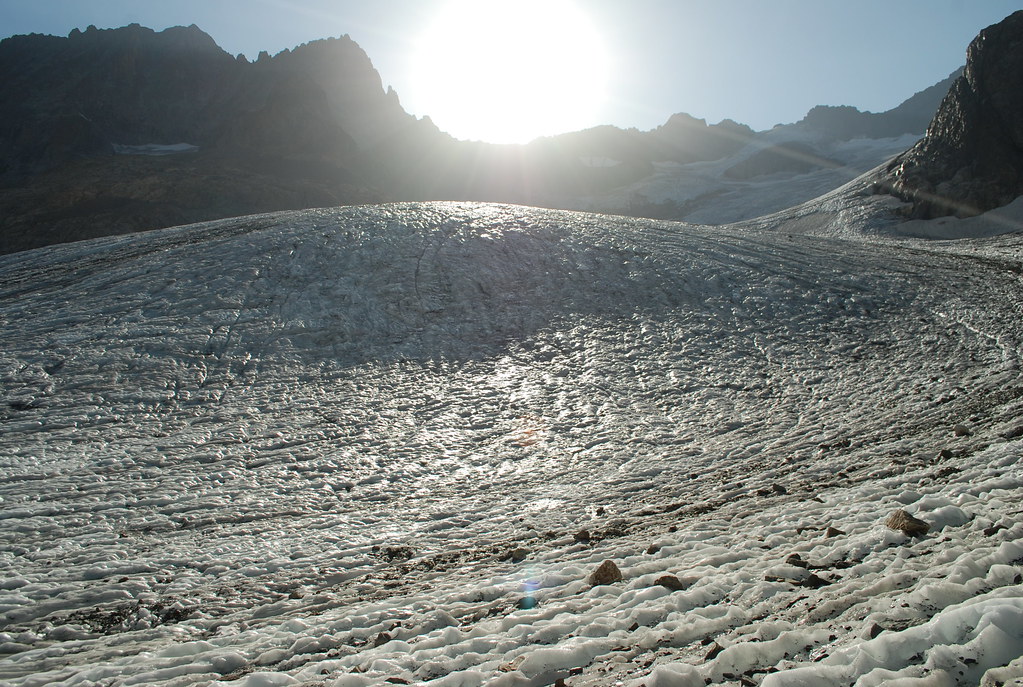
At the top of that swoosh, around 2800, we look around. It is a fine morning and the views are magnificent if somewhat intimidating. From closer up I think you can see that a route up to the Col du Sele is probably not so hard.
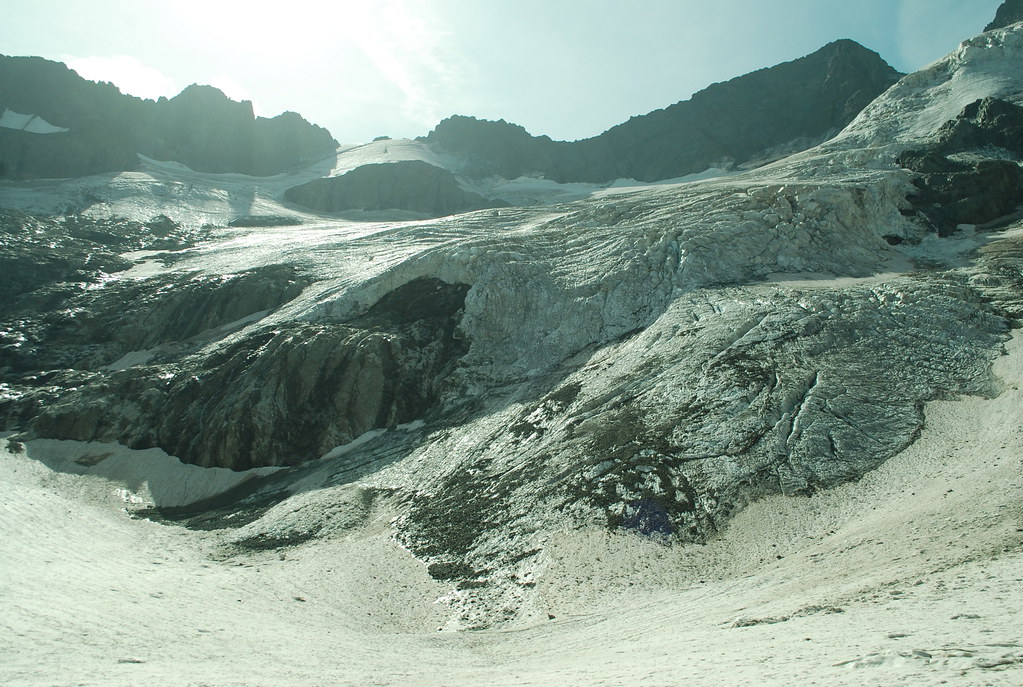
Go up the snow just left out of the picture, then traverse rising right above the first rock up the ice, and you'll avoid most of the crevasses. But, we have no time for that today, so it's time to return to the hut. Here's from a little lower down, showing how the glacier has been falling over the rock onto the lower portion; but that's fine, as long as you don't go near it.
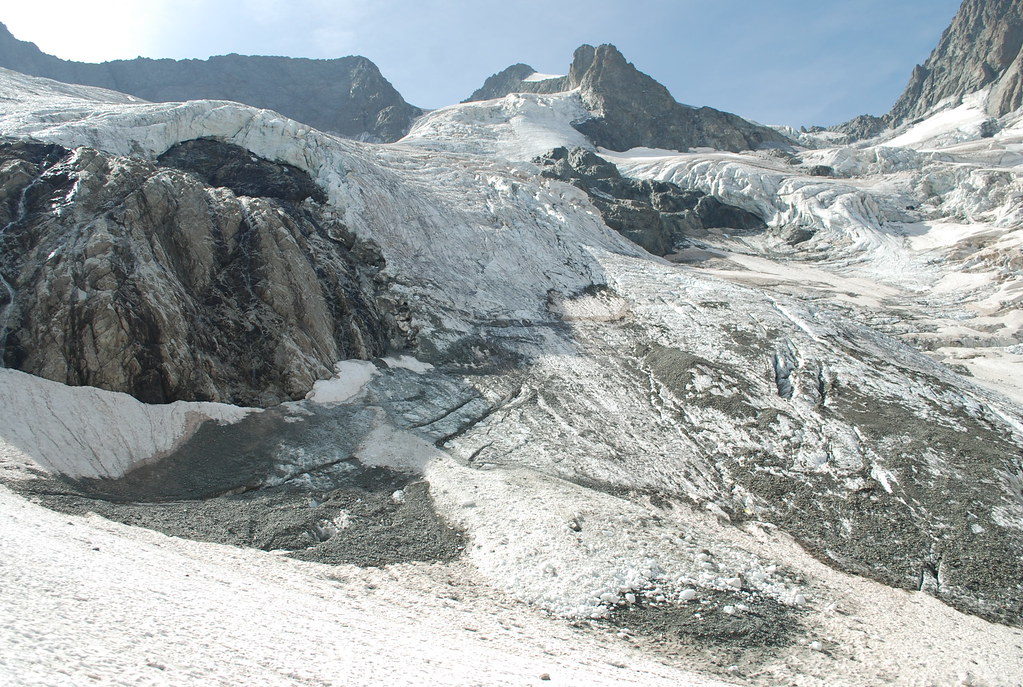
It would be nice to climb les Bans one day. But earlier in the season would be better I think.
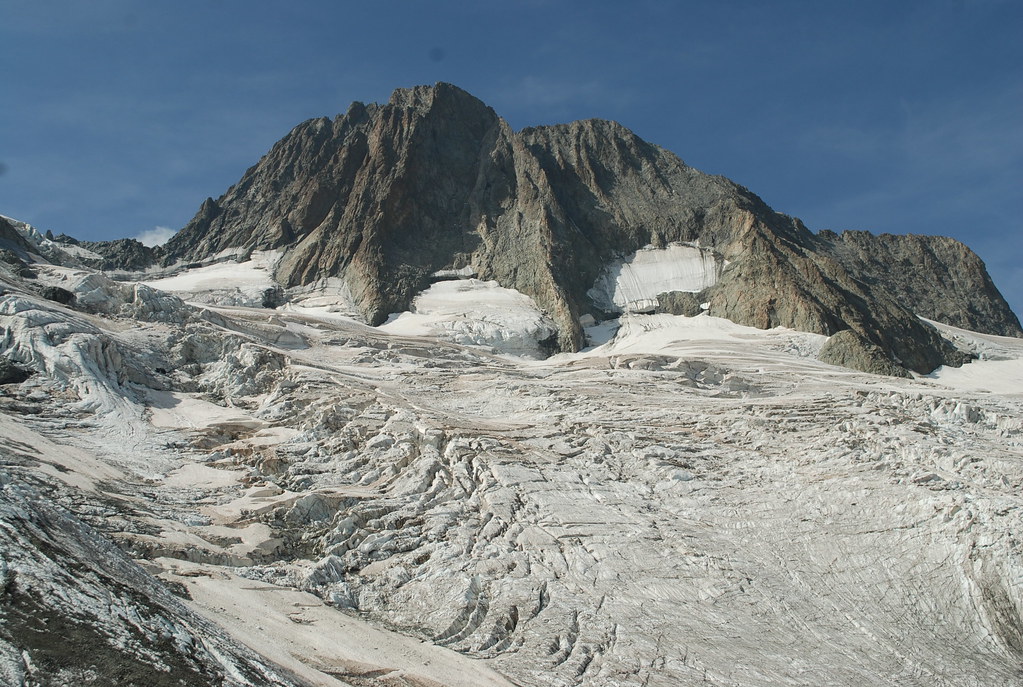
On the way down I incautiously strayed too far onto the "bulge" and we encountered the crevasse zone. It was entirely safe because you could see them all, but rather tedious threading our way through them. It finally gave me some idea of what you read in books when people describe the back-and-forth required.
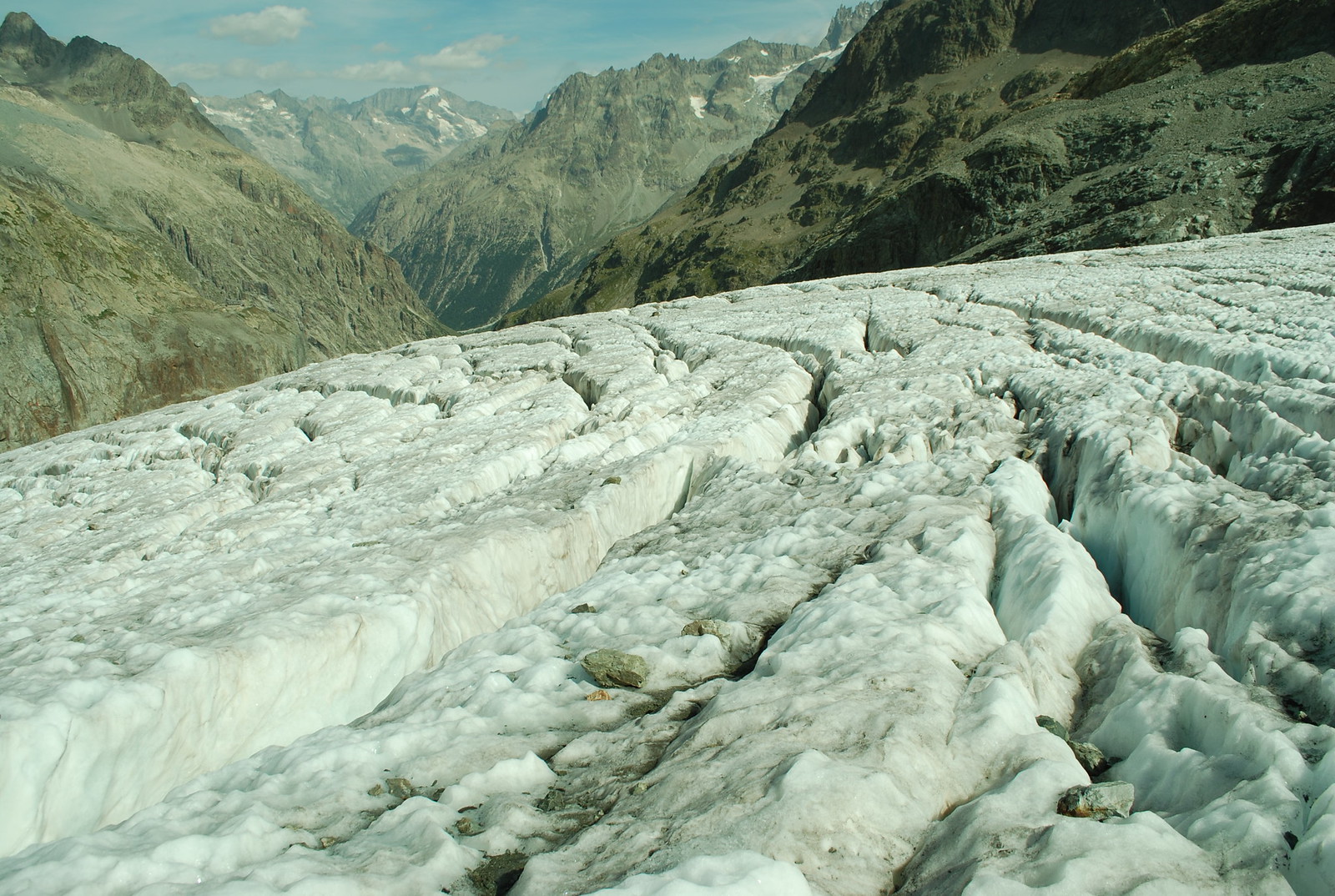
To end our adventure, here's D contemplating the glacier (but if you prefer, here is
him contemplating a large hole).
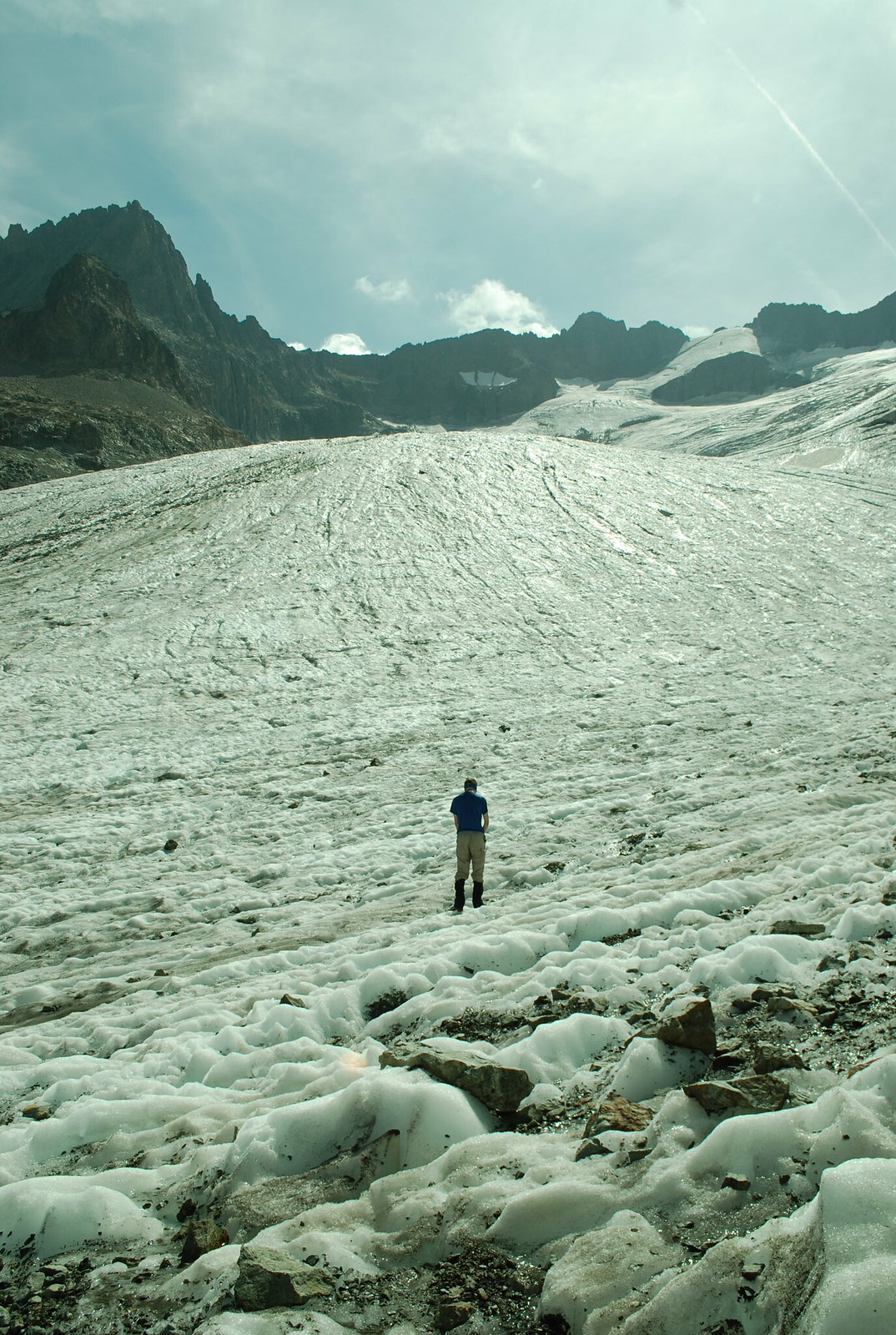
After that - and, of course, after lunch - there's the longish descent down into the valley. At the bottom we find that an emergency bridge has been restored to the more convenient path, so we take it. It looks like we're sending M across first but we aren't really: D's rucksac is already across so we experimented on him.
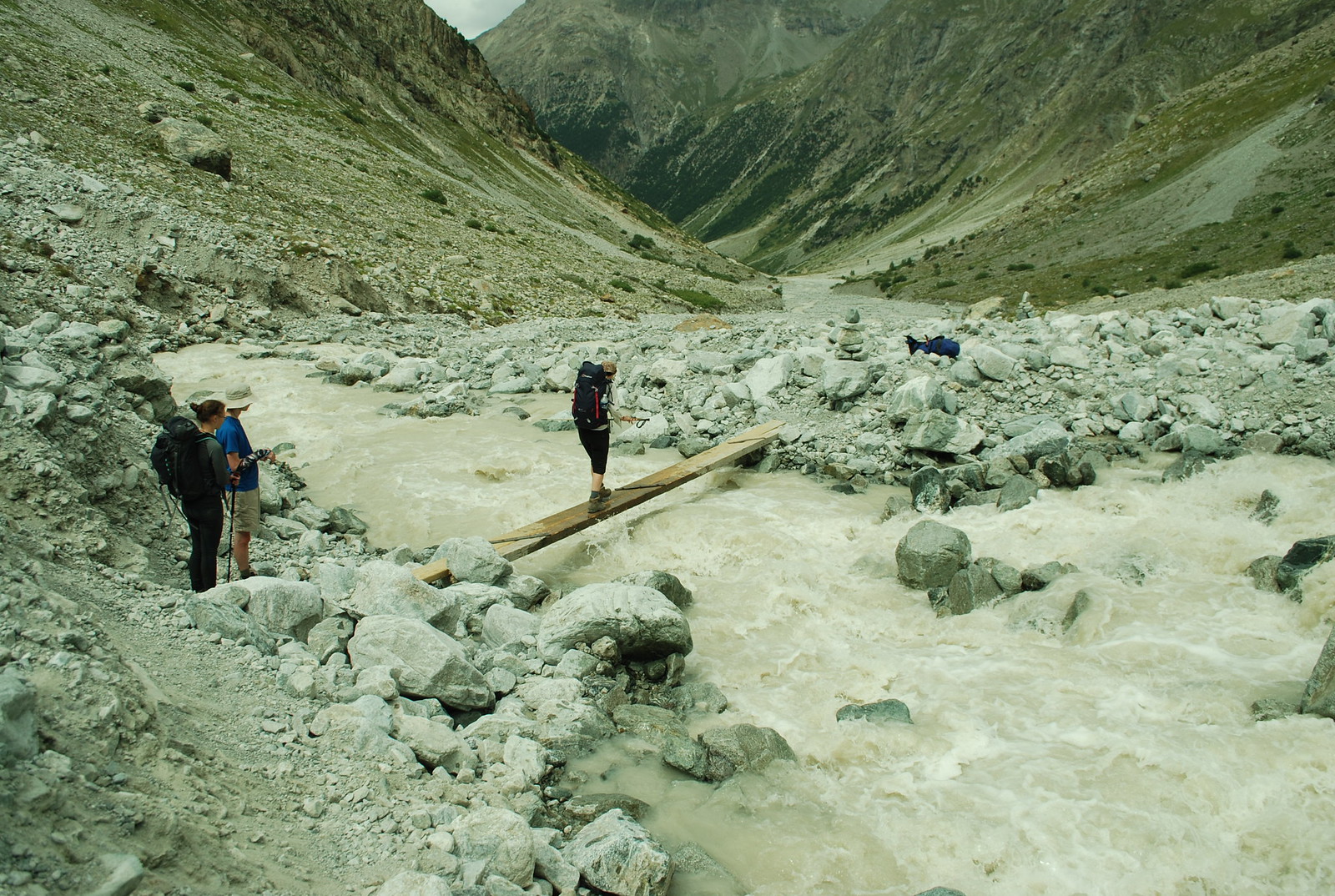
Gradually we descend back to more civilised parts,
leaving the glaciers behind, but the storm has still left some destruction behind and the path has washed out in a few places.
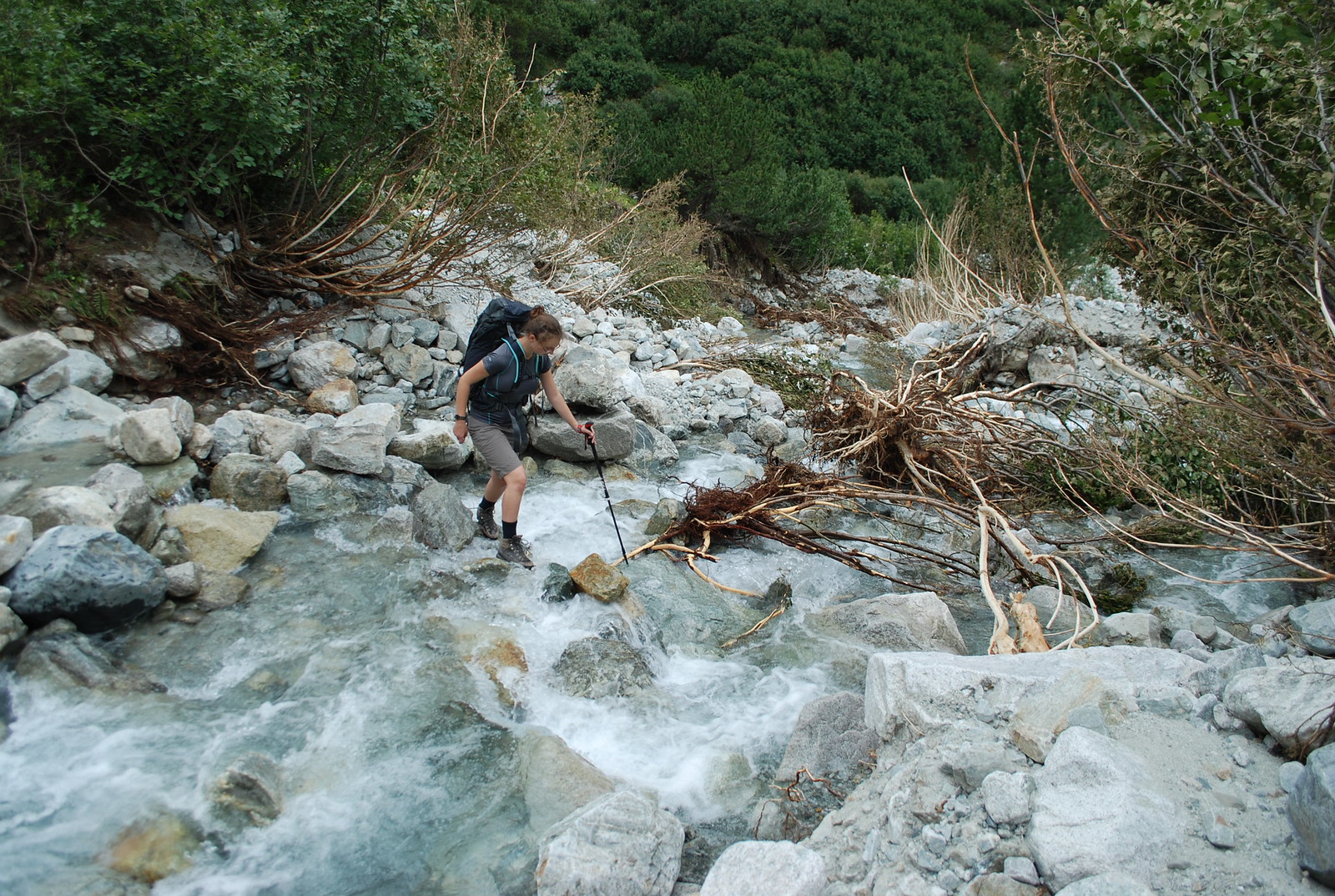
We take a break (and catch up with D) at the
shut-for-the-season-remember Refuge du Carrelet. The bridge just lower that appeared totally broken on the way up is now
miraculously restored. I keep looking back; here's
just before la Berarde. Once back, we gratefully remove our Big Boots and head down to St Christophe en Oisans where we plan to spend the night; but I'll fold that into tomorrow.














